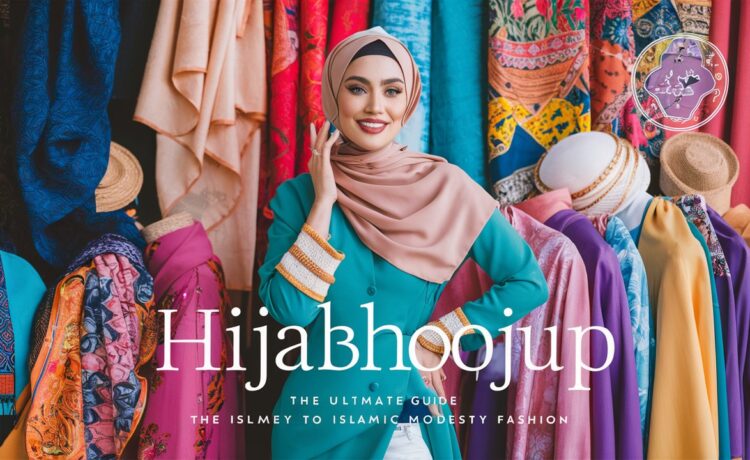The hijab, a symbol of modesty and faith, has evolved into a powerful fashion statement that transcends cultural boundaries. Hijabhoojup celebrates the cultural elegance of hijab fashion while offering valuable styling tips to empower wearers worldwide. Hijabhoojup is more than just a fashion platform; it is a cultural movement that embraces the beauty and diversity of hijab fashion. This blog post explores how Hijabhoojup promotes cultural elegance through fashion and provides essential tips for styling hijabs with grace and creativity.
Embracing Cultural Heritage through Hijab Fashion
The hijab has a rich historical background rooted in religious and cultural traditions. Originally worn as a symbol of modesty and reverence, the hijab has evolved over time to become a symbol of cultural identity and personal expression. Across various cultures, from the Middle East to Southeast Asia and beyond, the hijab reflects regional customs and beliefs, making it a versatile garment that embodies cultural heritage.
In contemporary society, hijab fashion has become a powerful medium for self-expression and creativity. Through innovative styling techniques and modern interpretations, wearers can showcase their individuality while honoring their cultural roots. Hijabhoojup encourages experimentation with colors, textures, and patterns, allowing wearers to craft unique looks that resonate with their personal style and cultural background.
Styling Tips for Modern Hijab Fashion
Choosing the right colors is essential in hijab fashion. Harmonizing the hijab with the outfit’s color palette can create a cohesive and polished look. For example, pairing neutral-colored hijabs with vibrant clothing items can create a striking contrast, while monochromatic ensembles offer a sophisticated and streamlined appearance.
The choice of fabric plays a crucial role in hijab styling. Fabrics like chiffon, silk, and cotton offer different textures and draping effects, allowing wearers to achieve various looks. Lightweight fabrics are ideal for warmer climates, providing comfort and breathability, while heavier fabrics like wool or cashmere offer warmth and elegance during colder seasons.
Accessories can elevate a hijab ensemble, adding personality and flair. Pins, brooches, and statement jewelry pieces can be used to secure the hijab in place or to embellish its folds. When selecting accessories, consider the overall aesthetic and ensure they complement the hijab without overwhelming the outfit.
Seasonal Trends and Adaptations
During warmer months, opt for lightweight and breathable hijab styles that offer comfort and ventilation. Flowy fabrics like chiffon or jersey are excellent choices, allowing air circulation while maintaining a modest appearance. Experiment with bright colors or floral prints to embrace the vibrancy of summer fashion.
In colder seasons, prioritize warmth without compromising on style. Layering techniques, such as wearing an underscarf or pairing the hijab with a cozy shawl or knit hat, can provide insulation while adding visual interest to the ensemble. Darker hues and textured fabrics like wool or velvet exude sophistication and warmth during chilly weather.
Cultural Diversity in Hijab Fashion
Hijab fashion varies significantly across different regions, each with its unique styles and trends. For instance, Southeast Asian hijab styles often feature intricate prints and vibrant colors, reflecting the region’s cultural diversity and artistic traditions. Middle Eastern hijab fashion emphasizes elegance and modesty, with draping techniques and embellishments that enhance the wearer’s femininity and grace.
Influential figures and celebrities play a pivotal role in shaping hijab fashion trends and perceptions. From fashion influencers on social media to prominent public figures, celebrities showcase diverse interpretations of hijab fashion, inspiring millions of followers worldwide. Their influence extends beyond style, advocating for inclusivity and representation within the fashion industry.
Tips for Choosing the Right Hijab Style
Consider your face shape when selecting a hijab style. For instance, rectangular or oval-shaped faces may benefit from voluminous styles that add softness and balance. Round faces can be complemented by elongated hijab styles that create a slimming effect, while heart-shaped faces suit styles that frame the face without overwhelming its natural contours.
Adapt hijab styles to suit different occasions and settings. Formal events may call for elegant draping techniques and luxurious fabrics, while casual outings allow for more relaxed and versatile styling options. Workplace environments may require understated and professional hijab styles that convey confidence and professionalism.
Conclusion
Hijabhoojup embodies the essence of cultural elegance and diversity through its celebration of hijab fashion. By embracing the beauty of traditional attire while embracing modern trends, Hijabhoojup empowers wearers to express themselves confidently and authentically. Whether you’re new to hijab styling or a seasoned fashion enthusiast, Hijabhoojup offers invaluable insights, tips, and trends to enhance your hijab fashion journey.
Explore the richness of hijab fashion with Hijabhoojup and discover how this timeless garment can serve as a symbol of cultural pride and personal style. Let your hijab be a canvas for creativity, self-expression, and cultural heritage.













